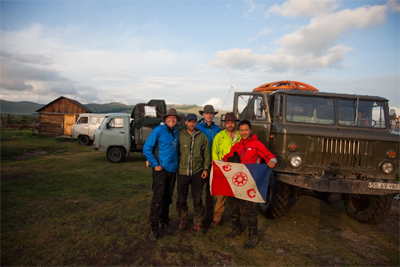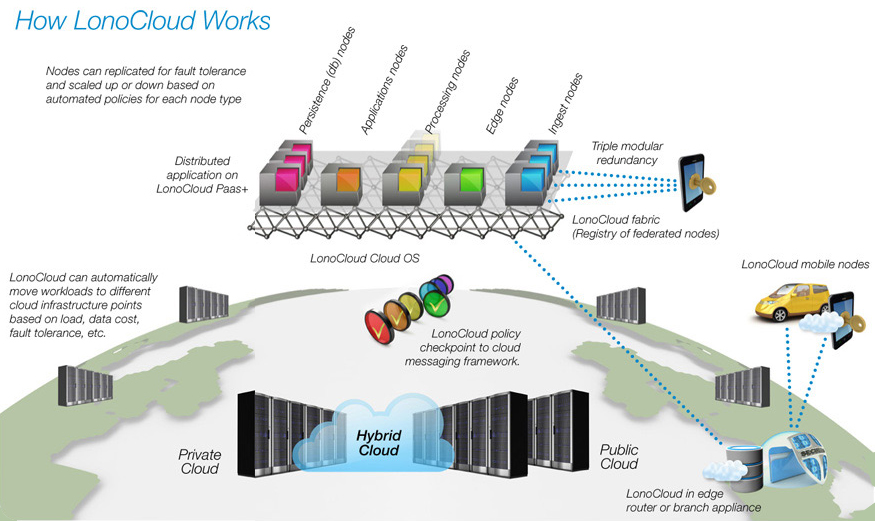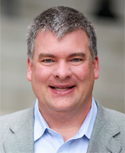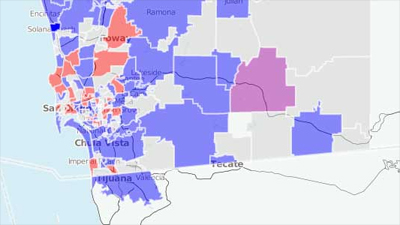Calit2 Researchers Create Companies, Then Sell Them
San Diego, Aug. 16, 2013 --This is the year of the takeover in the Qualcomm Institute. Not one, but two small firms founded or co-founded by researchers with deep roots in the UCSD division of the California Institute for Telecommunications and Information Technology (Calit2) have recently been acquired by larger companies eager to obtain innovative technologies developed originally at UC San Diego.
|
Tomnod was founded by Calit2 research scientist Albert Yu-Min Lin and three fellow alumni of the Jacobs School of Engineering. They created the company after the success of a project using crowdsourcing to get thousands of volunteers to mark up satellite images of Mongolia to help in the search for the lost burial site of Genghis Khan (a joint project with National Geographic).
LonoCloud was co-founded by Computer Science and Engineering associate professor Ingolf Krueger, who arrived at UCSD in 2001 as an assistant research scientist in Calit2. Krueger also directed Calit2's Software & Systems Architecture & Integration group, but his focus increasingly shifted to teaching in CSE and the Rady School of Management, and directing the Gordon Engineering Leadership Center -- all while juggling the start-up in his spare time until he was able to take a leave of absence.
|
LonoCloud developed an innovative, cloud-based service platform to support the “Internet of Things.”
“We are very excited to join ViaSat, which will allow us to continue building out our technology, while joining forces with an innovator in the field of satellite and other digital communication products,” said Krueger.
LonoCloud’s software system contains sophisticated, distributed mesh algorithms that create a network foundation for enterprise services and applications to interact and communicate with one another (the "service fabric"). This next-generation cloud computing architecture runs as an overlay to enterprise network environments, enabling low-cost, distributed computing across multiple servers in the cloud.
|
"Adding this core technical capability to our broadband network will both enhance our existing offering as well as shorten development cycles for new service offerings," said Mark Dankberg , ViaSat chairman and CEO. "Further, we're excited to add this talented team to our rapidly-growing broadband group." LonoCloud employees are joining ViaSat's broadband networking team, and they won't have far to travel -- both companies have been based in San Diego. Prof. Krueger remains the company's Chief Technology Officer.
Tomnod
Key Tomnod executives who are also Jacobs School alumni made the decision to move to Colorado, where DigitalGlobe is based. Luke Barrington was based in Calit2 as he was finishing his Ph.D. in electrical engineering, and fellow Jacobs School alumni Nate Ricklin and Shay Har-Noy also made the move to Colorado, where they are creating an independent division within DigitalGlobe to build out their technology and leverage the company's digital satellite image library. “At DigitalGlobe, we can keep pursuing our vision of crowdsourcing the world,” Har-Noy said.
|
Lin is also pushing in a major new direction. He is the co-director and co-founder of Distributed Health Labs in the Qualcomm Institute (together with UCSD School of Medicine professor Eliah Aronoff-Spencer). DHLabs is developing wireless and other health-related devices that can be cheap enough to sell and even be manufactured in developing countries to create jobs. DHLabs also launched a team to compete for the Tricorder X-Prize, a prize funded by Qualcomm, Inc., to advance the state of the art in wireless health devices.
|
For Barrington, UC San Diego’s emphasis on inter-disciplinary research was inspiring. He was an electrical engineering Ph.D. student, but for his thesis, he worked with computer engineers, material science engineers, and musicians. “We need that broader thinking,” he said. Tomnod also benefited from the support of EvoNexus, a start-up incubator in San Diego, which provided mentorship and facilities. “We were all working from home and were homeless in a way, when they arrived and helped us out,” Barrington said.
Media Contacts
Ioana Patringenaru, Jacobs School of Engineering, 858-822-0899, ipatrin@ucsd.edu or Doug Ramsey,Qualcomm Institute, 858-822-5825, dramsey@ucsd.edu
Related Links






